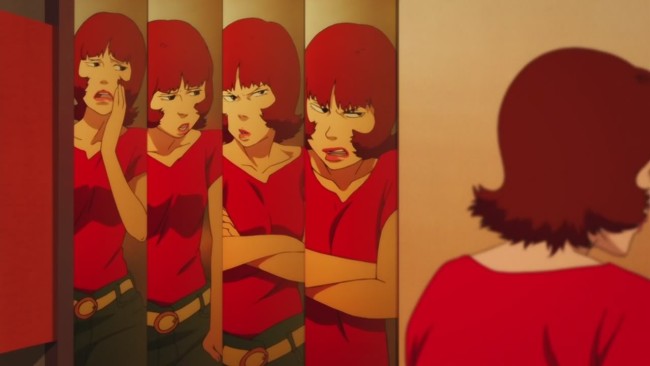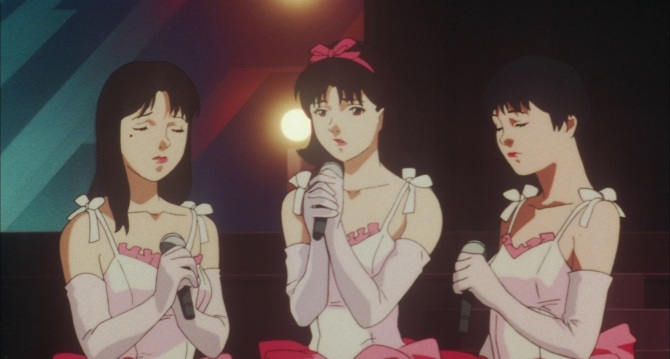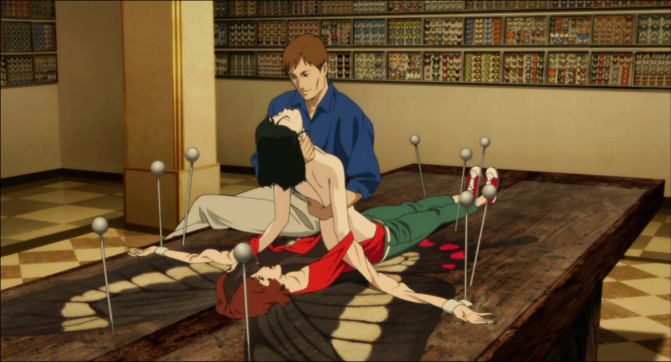By Mikhail Karadimov June 19th, 2015
Every filmgoer avoids a genre or two, a category. Maybe they can’t stand documentaries or westerns or foreign dramas. Some balk at certain actors, writers, directors. They shrivel away from 4:3 aspect ration, from black and white, from CGI-ed spectacles. They sidestep their cinematic hang-ups as if they were confronted by the plague.
I avoided anime films for the longest time. I didn’t think too highly of them. I was above it all. Above the people who watched them. Fan boys, fan girls. People obsessed with Manga, with Dragon Ball Z, with Gundam. I would see these shows, these movies, these books, and I would think of unhealthy people, pale people, wan people. I would think of conventions, gatherings, where people would harass each other with nasal-dripped trivia. I would think of obsessives, of perverts.
But, of course, that’s not the case. Anime fans vary in stripe and color. The genre’s not solely owned by those who hide themselves in basements and attics and blog and post asinine and cruel comments from a place of pitch black anonymity. Nor is it a genre that lacks aspiration, which I had first assumed. Not every anime is like Dragon Ball Z: constipated with slow-burn action and gritted staring, bullshit philosophy about harnessing energy responsibly, andblah blah blah. It’s not all Hello Kitty and Sailor Moon, cartoons meant to infantilize women, shove them into teeny tiny schoolgirl outfits that sexualizes and belittles them.
It wasn’t till I watched Satoshi Kon’s Paprika (06) last year—on a whim—that I finally calmed down. Alas, another person—an anime director no less—who openly expressed my concerns with some of anime’s more undesirable drawbacks. Primarily: the tendency to smother everything in cute preciousness: little kittens, bubble gum, frail girls who flash the peace sign.
The late, great Satoshi Kon made a career of giving us what we want—what the typical anime crowd desires—and then shaming us for it. Perfect Blue (97) follows the tragic misstep of a Japanese pop musician who sings everyday in the middle of a park in the skimpiest of wear, hopping up and down, a singer who then decides to transition into the world of film. She’s fractured by split personalities: the cut-out “musician” everyone lusts after or looks to shame or discredit with lascivious intent, and the woman struggling to break from everyone’s fixed perception of her. A mirrored split. We get the anime character we expect to see in the singer—a subservient sex icon—and the antithesis in the actress who collapses under the pressures of dealing with the consequences of such a predatory culture.
Kon further explores the theme of fractured identities with his final filmPaprika. (Kon died of pancreatic cancer in 2010). This time the film’s fabric of existence tears open not because of one woman’s mental frailty, but because of a seismic conflict between dreams and reality. An expert at skirting the line between these two worlds, the film’s titular protagonist Paprika—also named Chiba Atsuko (her earthly name)—takes on different physical forms dependent on the film goer’s state of lucidity. The dream world brings us Paprika. A woman—or girl—manufactured by pure fantasy. An anime fan’s ideal lady. A manic pixie with short bobbed hair, an easy t-shirt, capris, and Chuck Taylor kicks. A girl who flirts and fights and bops around to Japanese super pop, a woman who ceaselessly cares for your every neurotic tendency, who cleans up your every foul thought, who fixes your dreams, your psyche, but doing it through crushes, by playing the coquette through batted eyelashes, and so on. Her counterpart isn’t as fun, isn’t as wild. Chiba stands withdrawn. She isn’t swayed by looks or machismo or hard chins, instead, she falls for the obese genius responsible for the DC Mini, a gizmo that shuttles people through one another’s dreams, a gateway to a shared dreamscape that’s eventually corrupted by a nightmare gone wrong, a psychotic parade of sex and consumerism led by an incorrigible Geisha figure (a symbol of sexual and repressive antiquity)—pure insanity: the repression of an entire Japanese culture come busting through as business men leap suicidal from building tops, a smile stretched broadly, madly, across their faces.
Satoshi Kon is possibly the only director who’s confronted so directly the issue of anime’s piss-poor portrayal of women by placing them front and center. Kon eases the viewer in by introducing us to well-worn tropes, to women who behave like dainty snow flakes, injecting them with high levels of sugar, before revealing the other half of their psyche, the jaded side, the side that’s fed up with being forced to embody other people’s projections. These aren’t the women of animes past, nothing like Doris Lang, the damsel in distress fromVampire Hunter D, who quickly trades in her agency, her spunk, for sexual servitude. As soon as the titular hunter shows up and proves his bonafides as a killer of vampires, she slips her dress off to reveal her breasts thinking that this is all the hunter wants from her. She’s right away marginalized into a ditzy follower who coos after D. Even Akira, one of the greatest—if not the greatest—anime of all time treats its women as plot points or manipulative moments of emotion. Kon doesn’t play by the same rules. He addresses the unnerving stereotypes and clichés of anime films and then subverts them by addressing them head on, creating a glaring juxtaposition that will hopefully fix some of the misconceptions held by the unconverted.








